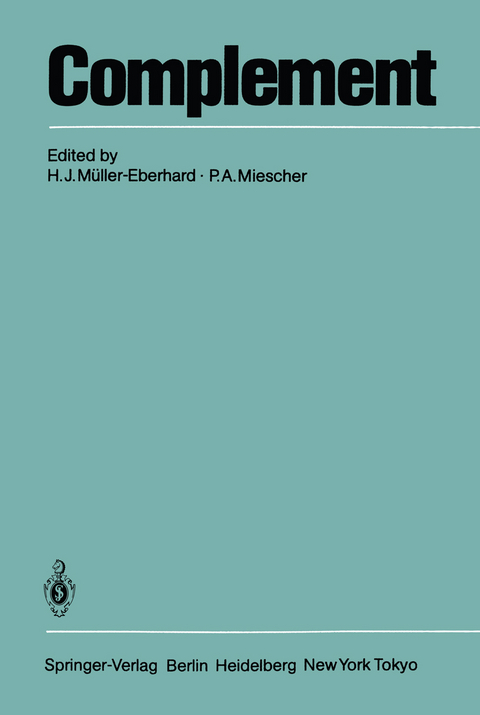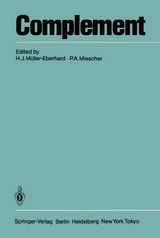Complement
Springer Berlin (Verlag)
978-3-540-15075-6 (ISBN)
and Overview.- Basic Aspects.- Structure and Expression of the C3 Gene.- Molecular Genetics of the Major Histocompatibility Linked Complement Genes.- The ?-Cys-?-Glu Thiolester Bond in Human C3 and C4, and ?2-Macroglobulin.- Structure and Function of the Anaphylatoxins.- The Human C3b Receptor.- The Chemistry and Biology of Complement Receptors.- Molecular Mechanisms.- Initiation of Complement Activation.- The First Component of Human Complement (Cl): Activation and Control.- The Alternative Pathway of Complement.- The Role of Antibody in the Activation of the Alternative Complement Pathway.- The Membrane Attack Complex.- Biologic Aspects.- Synthesis of Complement by Macrophages and Modulation of Their Functions Through Complement Activation.- Regulation of Immune Response by Components of the Complement Cascade and Their Activated Fragments.- Complement, Viruses, and Virus-Infected Cells.- The Role of Complement in Host Resistance to Bacteria.- Relationships Among the Complement, Kinin, Coagulation, and Fibrinolytic Systems.- Pathologic Aspects.- Inherited Deficiencies of Complement Proteins in Man.- The Role of Complement in Experimental Disease Models.- The Role of Complement in Immune Clearance of Blood Cells.- Methods to Detect and Quantitate Complement Activation.- Addendum to: Synthesis of Complement by Macrophages and Modulation of Their Functions Through Complement Activation.
| Erscheint lt. Verlag | 1.4.1985 |
|---|---|
| Zusatzinfo | VI, 474 p. 35 illus. |
| Verlagsort | Berlin |
| Sprache | englisch |
| Maße | 170 x 244 mm |
| Gewicht | 865 g |
| Themenwelt | Sachbuch/Ratgeber ► Gesundheit / Leben / Psychologie ► Lebenshilfe / Lebensführung |
| Medizin / Pharmazie ► Medizinische Fachgebiete ► Dermatologie | |
| Studium ► Querschnittsbereiche ► Infektiologie / Immunologie | |
| Schlagworte | Bacteria • Blood • Genetics • Histocompatibility • Komplement • Macrophages • molecular genetics • proteins • resistance |
| ISBN-10 | 3-540-15075-7 / 3540150757 |
| ISBN-13 | 978-3-540-15075-6 / 9783540150756 |
| Zustand | Neuware |
| Haben Sie eine Frage zum Produkt? |
aus dem Bereich




